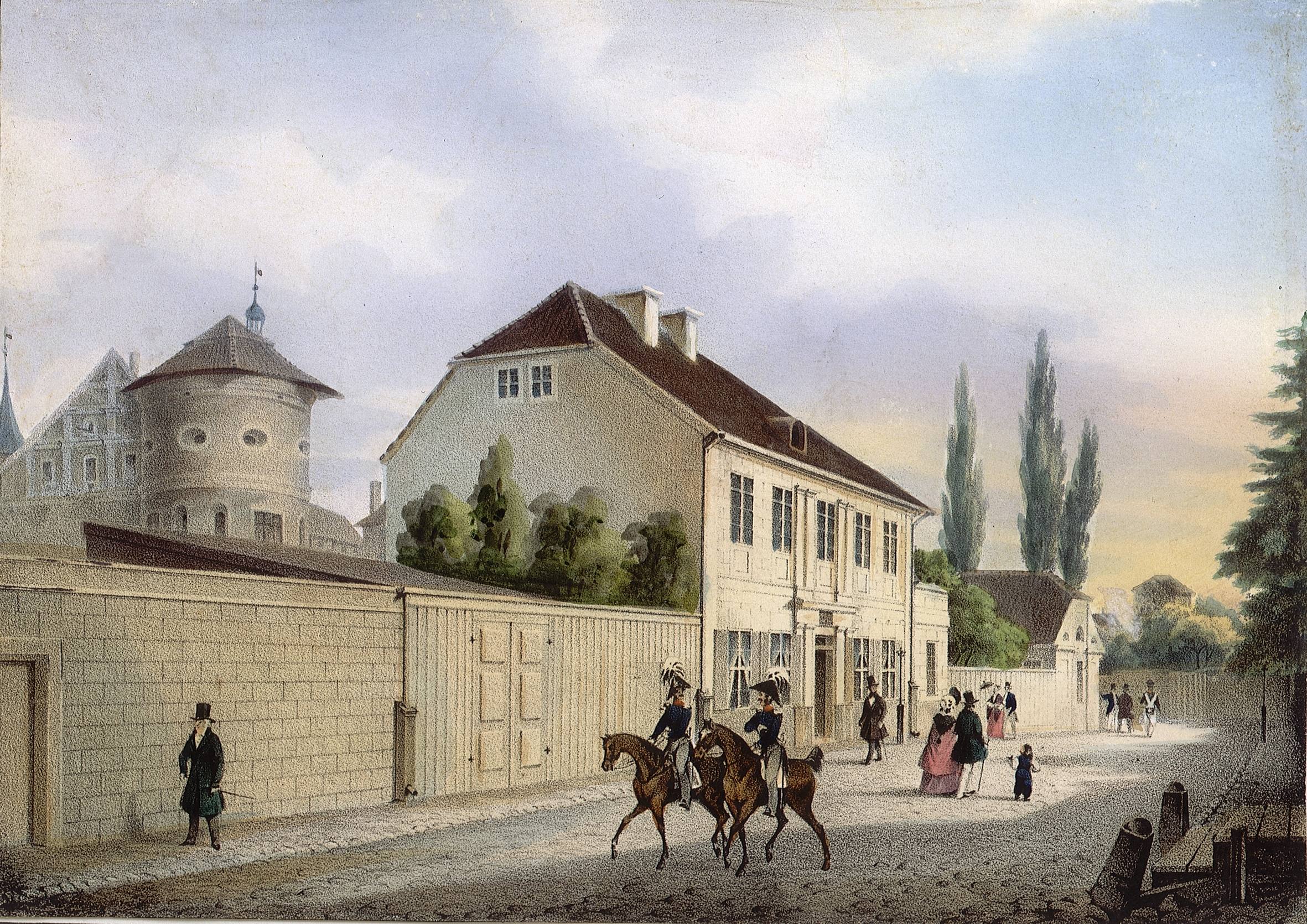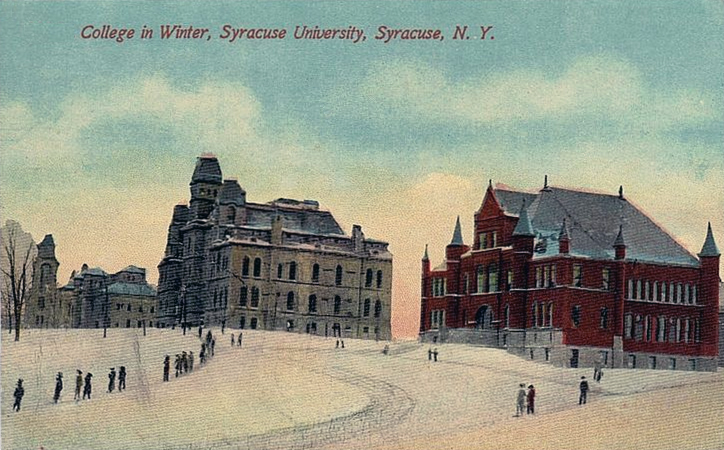|
Theory-laden
In philosophy of science, an observation is said to be "theory-laden" when shaped by the investigator's theoretical presuppositions. The thesis is chiefly associated with the late 1950s–early 1960s work of Norwood Russell Hanson, Thomas Kuhn, and Paul Feyerabend, though it was likely first put forth some 50 years earlier, at least implicitly, by Pierre Duhem.Bogen, Jim (2014)"Theory and Observation in Science" In: Edward N. Zalta (ed.), ''The Stanford Encyclopedia of Philosophy'' (Summer 2014 Edition). Semantic theory-ladenness refers to the impact of theoretical assumptions on the meaning of observational terms, while perceptual theory-ladenness refers to their impact on the perceptual experience itself. Theory-ladenness is also relevant for measurement outcomes: the data thus acquired may be said to be theory-laden since it is meaningless by itself unless interpreted as the outcome of the measurement processes involved. Theory-ladenness poses a problem for the confirmation of ... [...More Info...] [...Related Items...] OR: [Wikipedia] [Google] [Baidu] [Amazon] |
|
 |
Philosophy Of Science
Philosophy of science is the branch of philosophy concerned with the foundations, methods, and implications of science. Amongst its central questions are the difference between science and non-science, the reliability of scientific theories, and the ultimate purpose and meaning of science as a human endeavour. Philosophy of science focuses on metaphysical, epistemic and semantic aspects of scientific practice, and overlaps with metaphysics, ontology, logic, and epistemology, for example, when it explores the relationship between science and the concept of truth. Philosophy of science is both a theoretical and empirical discipline, relying on philosophical theorising as well as meta-studies of scientific practice. Ethical issues such as bioethics and scientific misconduct are often considered ethics or science studies rather than the philosophy of science. Many of the central problems concerned with the philosophy of science lack contemporary consensus, including whether ... [...More Info...] [...Related Items...] OR: [Wikipedia] [Google] [Baidu] [Amazon] |
|
Empirical Evidence
Empirical evidence is evidence obtained through sense experience or experimental procedure. It is of central importance to the sciences and plays a role in various other fields, like epistemology and law. There is no general agreement on how the terms ''evidence'' and ''empirical'' are to be defined. Often different fields work with quite different conceptions. In epistemology, evidence is what Justification (epistemology), justifies beliefs or what determines whether holding a certain belief is rational. This is only possible if the evidence is possessed by the person, which has prompted various epistemologists to conceive evidence as private mental states like experiences or other beliefs. In philosophy of science, on the other hand, evidence is understood as that which ''Scientific method#Confirmation, confirms'' or ''disconfirms'' Hypothesis#Scientific hypothesis, scientific hypotheses and arbitrates between competing theories. For this role, evidence must be public and uncont ... [...More Info...] [...Related Items...] OR: [Wikipedia] [Google] [Baidu] [Amazon] |
|
|
Scientific Method
The scientific method is an Empirical evidence, empirical method for acquiring knowledge that has been referred to while doing science since at least the 17th century. Historically, it was developed through the centuries from the ancient and medieval world. The scientific method involves careful observation coupled with rigorous skepticism, because Philosophy of science#Observation inseparable from theory, cognitive assumptions can distort the interpretation of the Perception#Process and terminology, observation. Scientific inquiry includes creating a testable hypothesis through inductive reasoning, testing it through experiments and statistical analysis, and adjusting or discarding the hypothesis based on the results. Although procedures vary across Branches of science, fields, the underlying #Process, process is often similar. In more detail: the scientific method involves making conjectures (hypothetical explanations), predicting the logical consequences of hypothesis, then ... [...More Info...] [...Related Items...] OR: [Wikipedia] [Google] [Baidu] [Amazon] |
|
 |
Norwood Russell Hanson
Norwood Russell Hanson (August 17, 1924 – April 18, 1967) was an American philosopher of science. Hanson was a pioneer in advancing the argument that observation is theory-laden — that observation language and theory language are deeply interwoven — and that historical and contemporary comprehension are similarly deeply interwoven. His single most central intellectual concern was the comprehension and development of a logic of discovery. Life Hanson was born in 1924 in West New York, New Jersey. He studied trumpet with the legendary William Vacchiano and played at Carnegie Hall, but his musical career was interrupted by World War II. He enlisted in the United States Coast Guard, later transferring to the United States Marine Corps, where he trained as a fighter pilot, developing a reputation as a 'hot pilot' (famously looping the Golden Gate Bridge). He served on the ill-fated USS ''Franklin'' in the VMF-452 "Skyraiders" Squadron, for which he designed the unit's logo ... [...More Info...] [...Related Items...] OR: [Wikipedia] [Google] [Baidu] [Amazon] |
|
Measurement
Measurement is the quantification of attributes of an object or event, which can be used to compare with other objects or events. In other words, measurement is a process of determining how large or small a physical quantity is as compared to a basic reference quantity of the same kind. The scope and application of measurement are dependent on the context and discipline. In natural sciences and engineering, measurements do not apply to nominal properties of objects or events, which is consistent with the guidelines of the International Vocabulary of Metrology (VIM) published by the International Bureau of Weights and Measures (BIPM). However, in other fields such as statistics as well as the social and behavioural sciences, measurements can have multiple levels, which would include nominal, ordinal, interval and ratio scales. Measurement is a cornerstone of trade, science, technology and quantitative research in many disciplines. Historically, many measurement syste ... [...More Info...] [...Related Items...] OR: [Wikipedia] [Google] [Baidu] [Amazon] |
|
 |
Immanuel Kant
Immanuel Kant (born Emanuel Kant; 22 April 1724 – 12 February 1804) was a German Philosophy, philosopher and one of the central Age of Enlightenment, Enlightenment thinkers. Born in Königsberg, Kant's comprehensive and systematic works in epistemology, metaphysics, ethics, and aesthetics have made him one of the most influential and highly discussed figures in modern Western philosophy. In his doctrine of transcendental idealism, Kant argued that space and time are mere "forms of intuition" that structure all experience and that the objects of experience are mere "appearances". The nature of things as they are in themselves is unknowable to us. Nonetheless, in an attempt to counter the philosophical doctrine of Philosophical skepticism, skepticism, he wrote the ''Critique of Pure Reason'' (1781/1787), his best-known work. Kant drew a parallel to the Copernican Revolution#Immanuel Kant, Copernican Revolution in his proposal to think of the objects of experience as confo ... [...More Info...] [...Related Items...] OR: [Wikipedia] [Google] [Baidu] [Amazon] |
|
Metaphysics Of Presence
Metaphysics of presence () is a view held by Martin Heidegger in ''Being and Time'' that holds the entire history of Western philosophy Western philosophy refers to the Philosophy, philosophical thought, traditions and works of the Western world. Historically, the term refers to the philosophical thinking of Western culture, beginning with the ancient Greek philosophy of the Pre ... is based on privileging presence over absence. Another translation of presence and absence is effectivity and possibility. See also * Heideggerian terminology References Concepts in metaphysics Philosophy of Martin Heidegger {{metaphysics-stub ... [...More Info...] [...Related Items...] OR: [Wikipedia] [Google] [Baidu] [Amazon] |
|
 |
Observation
Observation in the natural sciences is an act or instance of noticing or perceiving and the acquisition of information from a primary source. In living beings, observation employs the senses. In science, observation can also involve the perception and recording of data via the use of scientific instruments. The term may also refer to any data collected during the scientific activity. Observations can be qualitative, that is, the absence or presence of a property is noted and the observed phenomenon described, or quantitative if a numerical value is attached to the observed phenomenon by counting or measuring. Science The scientific method requires observations of natural phenomena to formulate and test hypotheses. It consists of the following steps: # Ask a question about a phenomenon # Make observations of the phenomenon # Formulate a hypothesis that tentatively answers the question # Predict logical, observable consequences of the hypothesis that have not yet been inv ... [...More Info...] [...Related Items...] OR: [Wikipedia] [Google] [Baidu] [Amazon] |
|
Duhem–Quine Thesis
In philosophy of science, the Duhem–Quine thesis, also called the Duhem–Quine problem, says that unambiguous falsifications of a scientific hypothesis are impossible, because an empirical test of the hypothesis requires one or more background assumptions. Rather than disproving the main hypothesis, the blame can be placed on one of the background beliefs or "auxiliary" hypotheses.: "The physicist can never subject an isolated hypothesis to experimental test, but only a whole group of hypotheses" (Duhem)... "Duhem denies that unambiguous falsification procedures do exist in science." It is named after French theoretical physicist Pierre Duhem and American logician Willard Van Orman Quine, who wrote about similar concepts. In recent decades, the set of associated assumptions supporting a thesis sometimes is called a bundle of hypotheses, i.e. a hypothesis and its background assumptions. Although a bundle of hypotheses as a whole can be tested against the empirical world a ... [...More Info...] [...Related Items...] OR: [Wikipedia] [Google] [Baidu] [Amazon] |
|
|
Confirmation Holism
In philosophy of science, confirmation holism, also called epistemological holism, is the view that no individual statement can be confirmed or disconfirmed by an empirical test, but rather that only a set of statements (a whole theory) can be so. It is attributed to Willard Van Orman Quine who motivated his holism through extending Pierre Duhem's problem of underdetermination in physical theory to all knowledge claims.W. V. O. Quine. 'Two Dogmas of Empiricism.' ''The Philosophical Review'', 60 (1951), pp. 20–43online text/ref> Duhem's idea was, roughly, that no theory of any type can be tested in isolation but only when embedded in a background of other hypotheses, e.g. hypotheses about initial conditions. Quine thought that this background involved not only such hypotheses but also our whole web of belief, which, among other things, includes our mathematical and logical theories and our scientific theories. This last claim is sometimes known as the Duhem–Quine thesis. A relat ... [...More Info...] [...Related Items...] OR: [Wikipedia] [Google] [Baidu] [Amazon] |
|
 |
Syracuse University
Syracuse University (informally 'Cuse or SU) is a Private university, private research university in Syracuse, New York, United States. It was established in 1870 with roots in the Methodist Episcopal Church but has been nonsectarian since 1920. Located in the city's University Hill, Syracuse, University Hill neighborhood, east and southeast of downtown Syracuse, the large campus features an eclectic mix of architecture, ranging from nineteenth-century Romanesque Revival architecture, Romanesque Revival to contemporary buildings. Syracuse University is organized into 13 schools and colleges and is Carnegie Classification of Institutions of Higher Education, classified among "R1: Doctoral Universities – Very high research activity". Syracuse University athletic teams, the Syracuse Orange, Orange, participate in 20 intercollegiate sports. SU is a member of the Atlantic Coast Conference (ACC) for all NCAA Division I athletics, except for the College rowing (United States), men's ... [...More Info...] [...Related Items...] OR: [Wikipedia] [Google] [Baidu] [Amazon] |